Text
11 Pictures of the Coronavirus Pandemic from Around the World
1. Since restaurants have been forced to close, one coffee shop in Washington decided to put paper cut-outs of customers sitting at tables.

2. Catholic priest Reginaldo Manzotti does a broadcast of the service while there are several pictures of his congregation.

3. Many elder people have been isolated so Belgian company ZoraBots came with the idea of making robots for use in elderly people’s homes so that they keep connected with their loved ones virtually.

4. Building around the world have been turn into hospitals to create extra capacity during the pandemic. In the picture below shows the Serbian military has installed beds to accommodate people with mid COVID-19 symptoms.

5. Famous places where used to be crowded are now deserted because of the lockdown. The pictures shows a ballet dancer dancing in an empty Times Square in New York.

6. Since the whole coronavirus started, people were panic-buying things in shops and it eventually led to empty shelves in every store. This is a picture from UK supermarket.

7. Due to the travel restrictions, many airlines have temporarily closed routes. These are Delta Airlines planes in Birmingham-Shuttlesworth international airport in Alabama.

8. Homeless people have no where to be social distancing with other people. This picture was taken in London.

9. Municipal workers are cleaning children’s play area in Escobedo on the outskirts of Monterrey, Mexico.

10. Many people have been thanking medical workers during this terrible condition around the world. This is a man posting a large thank you to medical workers in the nearby Elmhurst Hospital Center in Queens, New York City.

11. People in UK are displaying rainbows in windows to give hope out.

Source from : 11 striking photos of coronavirus pandemic from around the globe
1 note
·
View note
Text
Matika Wilbur is a visual storyteller. She has been traveling and photographing Indian county for the past five years. She began her career in fashion and commercial in Los Angeles, but then she realized that she wanted a different path as a photographer, she wanted to create portrait that deeply communicated people’s lives and experiences.

She created a project called “Project 562” started in 2012. it is about photographing over 562 federally recognized tribes in the United States.
“Through her lens, we are able to see the diversity, vibrancy, and realness of Indian Country, and in seeing, challenge and surpass stereotypical representations and refresh the national conversation about contemporary Native America”.




Another project she did “We Are One People”, is a series of contemporary Native American elders from Coast Salish Tribes.





Wendy Red Star
Native American visual artist who express her passion in different creative ways such as photography, sculpture, video, fiber arts, and performance. She has a BFA from Montana State University as well as an MFA in sculpture from University of California.
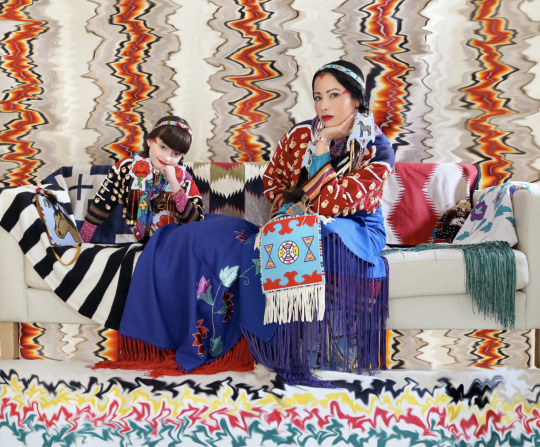
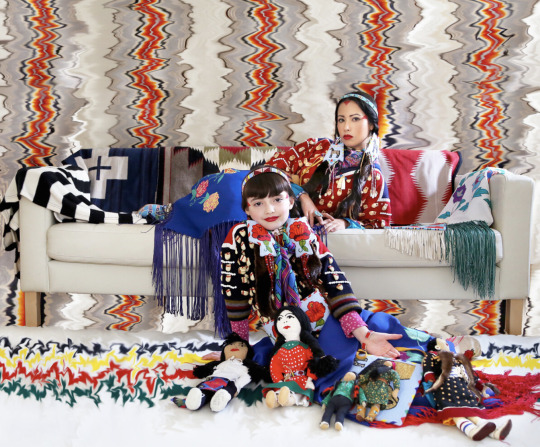
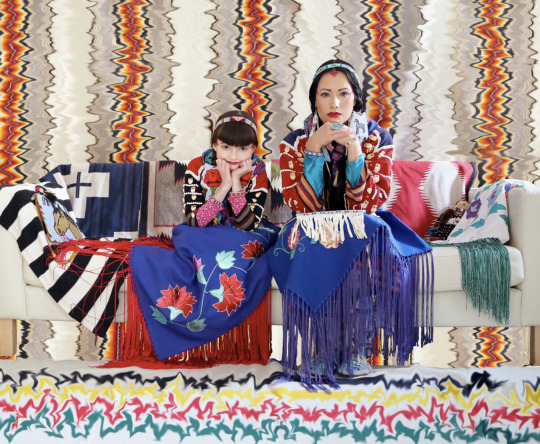
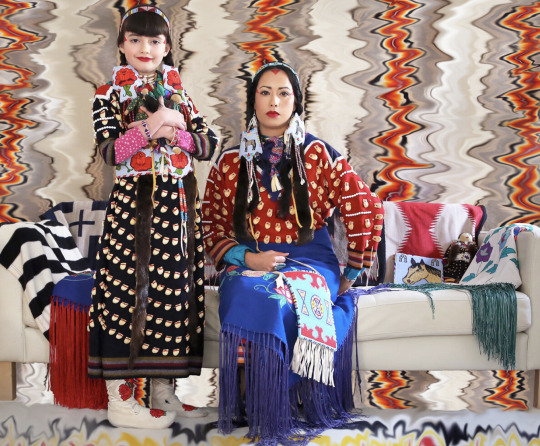
0 notes
Text
James Van Der Zee photographed Harlem in 1920s

James Van Der Zee, Self Portrait, 1918
(June 29, 1886, Lenox, Massachusetts) African-American photographer best known for his portraits from the Harlem Renaissance. Also known for capturing African-American life and celebrities such as Florence Mills and Adam Clayton Powell Jr. Before turning into photography he used to held jobs as a waiter and elevator operator. Later on, started to do photography work for the Hampton Institute. He died in 1983 in Washington, D.C. Nowadays his photographs are exhbited in The Museum of Modern Art in New York, LACMA, the Detroit Institute of Arts, and many more. Work
James Van Der Zee set his first portrait studio named “Guarantee Photo” in Harlem. He became the most successful photographer on Harlem.
He was an important documenter of Harlem Renaissance in 1920s. He photographed middle-class African American life, mostly indoor portraits including wedding photos, funeral, family photos.

Some of his images have special effects from daekroom manipulation.




0 notes
Text
Making Pictures with Migrants
In the world of photography people doesn’t care about the subject that it’s infront of the camera. In other words, the people behind doesn’t have a voice in comparison to the photographer.
“If we consider the ongoing migrant crisis playing out in large parts of the world, the aforementioned situation is directly comparable to how migrant issues are being discussed in countries that attract them: discussions focus on migrants, while mostly not giving them a voice at all — as if they had nothing to say whatsoever.”

Nowadays, even when the photographer has a powerful meaning behind a picture, people wouldn’t try to understand the photograph at all but just the good visual.
Prignot and Alvarez got to know the residents in the center,
at the same time, they documented them and the living conditions and produced a series of workshops for them.
“Here, Waiting” is a series of how the photographers see their subjects and how the subjects saw themselves.



There are many images drawn by children and that at least they provided the way for migrants to reach audiences in their target countries.
Prignot and Alvarez brought the power of photography for the people.
“To stick to photography, it’s not the pictures that change the world, it’s the joint making of pictures that does”.
0 notes
Text
GLAAD
GLAAD campus ambassadors are a volunteer network of network of LGBTQ. It’s a network that built by college and university students.
Series-ROSEWATER
It is about GLAAD Campus Ambassador Taylor Dolniak’s childhood that have been infused with new purpose. He took these photos from his own childhood and recreated them to show the time change, physicalities change, but he is still the same person.
“Knowing who you are and the person you want to become is only possible because of who you were in the past”.
Dolniak said that ROSEWATER was also a way to come out to their parents and old friends.





This project reminds us that it’s important to recognize the path that brought us to where we are today, especially in a way that doesn’t solely focus on the hardship of coming of age as a queer person.
Jesus Days, 1978-1983
Photographer Greg Reynolds created this photobook that documents his youth as an evangelical closeted gay man in the late 70′s and early 80′s.

“I appeared the model Christian, an evangelical poster boy. I prayed and read my bible everyday, went to church, and resisted sex.”

Reynolds’ Kickstarted video
Jen Rosenstein: Transformation Project
This project consists of transgender, gender non-conforming and intersex people around the country.





0 notes
Text
Nine Powerful Feminist Photo Series
When it comes to feminist photography the first figures that comes to our minds may be either Cindy Sherman or Annie Leibovitz. They are the most famous female names when it comes to female photographers. However, there are more people who excelled in the feminist photographic art.
But what is exactly a feminist photo series?
So it’s content about perspective on female experiences, rights and challenges. In this series it’s a way to expose the truth that some females go through. The following are photo series from the 20th and 21st centuries.
1. Abigail Heyman, “Growing Up Female,” 1974

2. Carrie Mae, Weems, The Kitchen Table Series, 1990

Art21 “Extended Play”
3. Donna Ferrato, “I Am Unbeatable”, 2007-2016

4. Liora K, “The Feminist Photos,” 2012
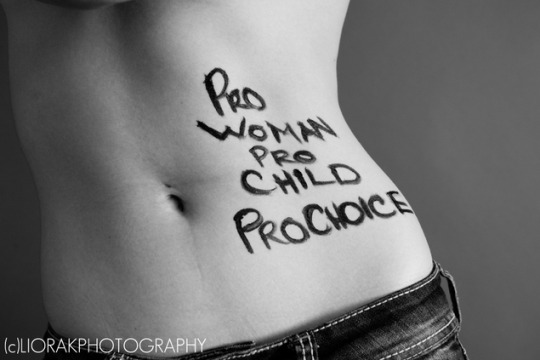
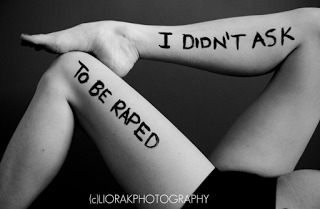
5. Tomoko Sawada was born in 1977 in Japan. She is a contemporary feminist photographer and performance artist.
“OMIAI”
She dressed as different women in each photo, she changed her outfit, her hair and even gain weight and lose weight to perform different roles, from traditional Japanese clothing to modern business dress.

6. Shirin Neshat was born in 1957, she is an Iranian artist lives in New York City.
“Women of Allah is a series” she did is about women’s identities in the Middle East.

7. Sara Naomi Lewkowicz is an American photographer.
She published the series “A portrait of domestic violence”in Time magazine and was showing the violence to women. She documented the story of Maggie and her boyfriend.

8. Jenkins Sterling was born in 1961 in London. She is a British feminist artist.
She did a self-portrait series called “Strip”.
The series is about men reaction to the strip that she is performing.

9. Bettye Lane was born in 1930, she was an American photojournalist and was known for documenting events of feminist movement, the civil rights movement and the gay rights movement.

0 notes
Text
Documenting Homelessness
Suitcase Joe, is a well known street photographer who documents homeless people and shares their stories. Also we have another example of Pedro Oliveira, a Brazilian photographer, who also did portraits of homeless people.





0 notes
Text
Conflict Conversations
Shahidul Alam is a Bangladeshi photojournalist. He was born in 1955. Except of being a photojournalist, he is also a writer and a curator. His work has been displayed at the Museum of Modern Art, New York, Center Pompidou, Paris and Tare Modern, London.

In 1984, he was working with a studio where he had equipment to do advertising and fashion. He said he was good at it technically but that was not something he enjoy to do. Finally he got into documentary photography and photojournalism.



He said he take pictures of social justice concerns or of crises is because to make a difference.
Series Crossfire:


Lack of Representation in Photojournalism
There are many facts that makes photojournalism not viable such as manipulating or just showing what the public wants to see and not the whole reality. There’s an article that discuss about that problem that pictures don’t tell the whole story and can be misinterpreted.

For the same reason there have been many controversies that have made photojournalism to look bad. As the example with Sally Mann with the picture White Skate.

1 note
·
View note
Text
Restorative Narrative
This term is best described as a “strength-based” approach to get in depth with a story or community. The genre was created by ivoh in order to tell the public a story with more details.
ivoh was inspired by the New Yorker’s writer Rachel Aviv’s story.

She wrote about how Newtown Bee responded to the shooting at Sandy Hook Elementary School on December 14, 2012.

It happened in Newtown when 20-year-old Adam Lanza shot and killed 20 children and 6 aldults staff members then he committed suicide.


Curtiss Clark said that “We need to extract ourselves from the sticky amber that freezes things in time”.
The response cause ivoh to consider how media tends to focus on “what happened” instead of “what’s possible”.
Restorative Narratives can tell the stories better and recovery.
0 notes
Text
Mobile Photography
Photography had a big impact in its history when the Brownie camera launched in 1901.
Now everyone were able to take pictures without any complication or knowledge about photography. As years pass by, we have seen how photography has evolved in many ways since now it’s easier to take a good picture even with just a phone.

Kodak’s brownie camera
The iPhone has been a big disadvantage for photojournalists since the competition has grown,
in relation to having it easier to take pictures with the iPhone than with the camera. It’s easier than in a crucial moment anyone will have an iPhone to to take a picture instead of a camera. Also the technological advancement has led people to create their own journalism which it’s not beneficial for photojournalism.
It has gone to the point that the war has been photographed with an iPhone
We have as an example Teru Kuwayama and Balazs who used the an iPhone app called Hipstamatic, to document the war for Basetrack.

Balazs Gardi, documents war in Hipstamatic
“Composing with the iPhone is more casual and less deliberate” -Damon Winter
In the article “How photographer Devin Allen helps Baltimore youth reclaim their narratives” by Allison Griner, she introduced one of the photographers that was deeply inspired by photography after owning the very first camera by himself, Devin Allen. As a similar experience, at Ansel Adams’ age fourteen, he received a Brownie box camera during the vacation with his family at Yosemite and that allowed him to shoot landscape photos.
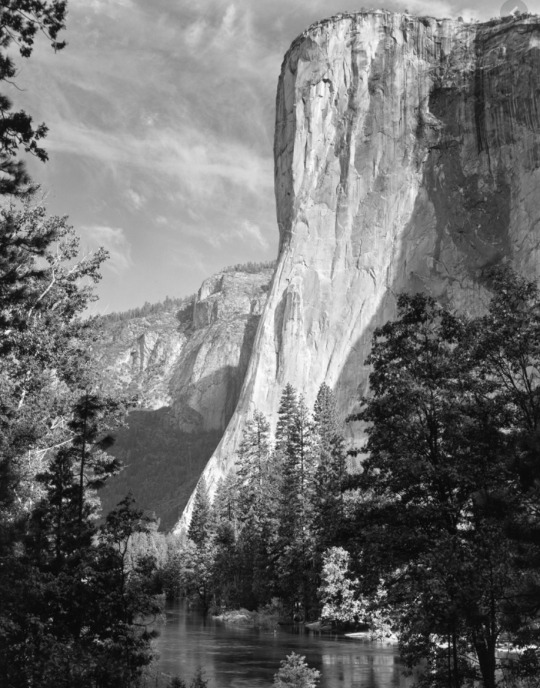
Another example is from Henri Cartier-Bresson, he got his first camera from his family too.
But for Devin Allen, he didn’t have the same chance as them, growing up in West Baltimore, he didn’t think he has that many options to be successful. He thought about being a rapper, drug dealer or even a basketball player.

The very first time he picked up the camera was for helping his friends to promote their events. He said that many people laughed at him and not taking it seriously. Soon, one of his photos became the cover of Time magazine.
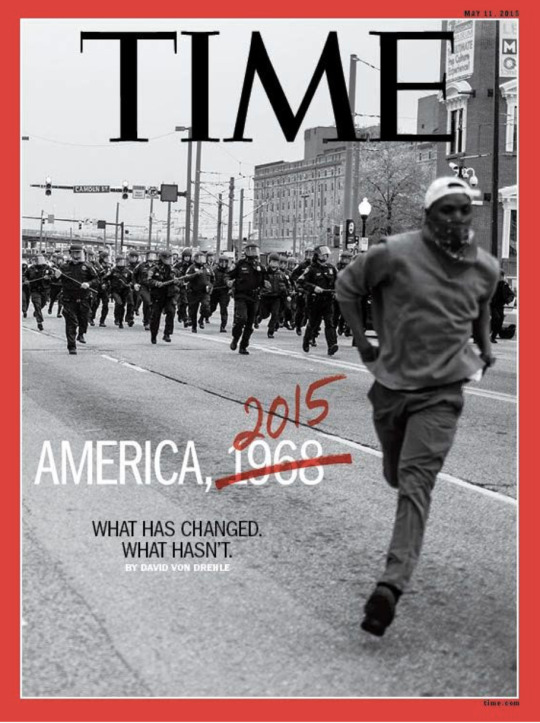
He was awarded the inaugural Gordon Parks Foundation Fellowship, and he released a book of street photography, “A Beautiful Ghetto”
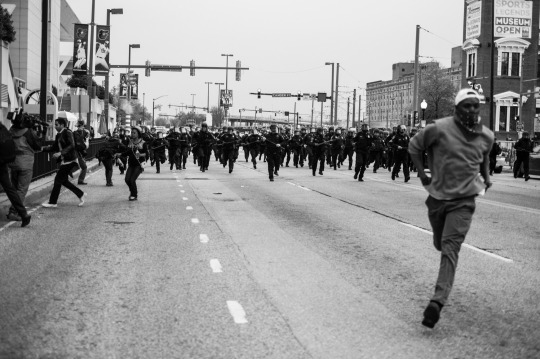
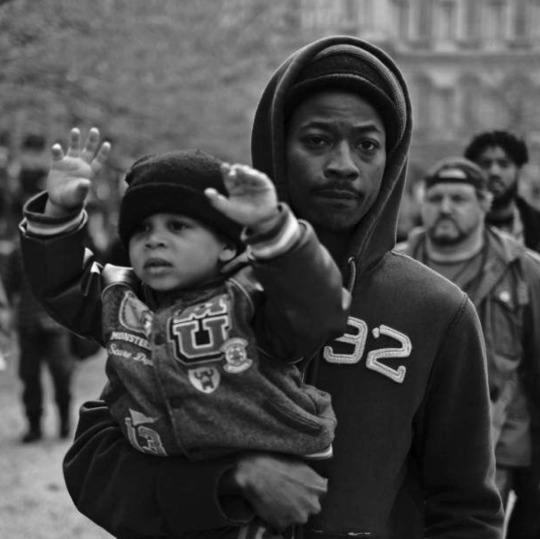
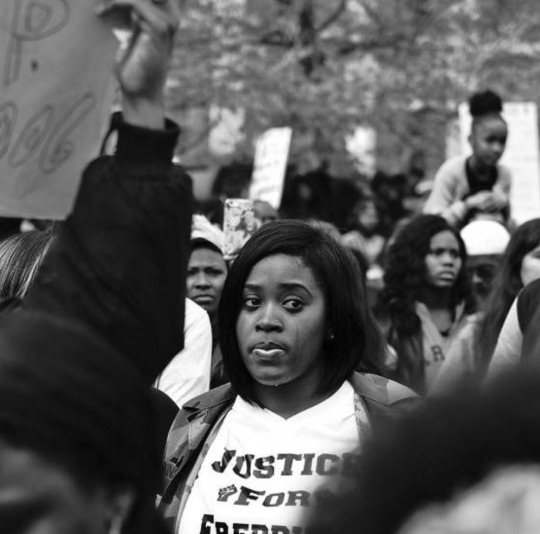
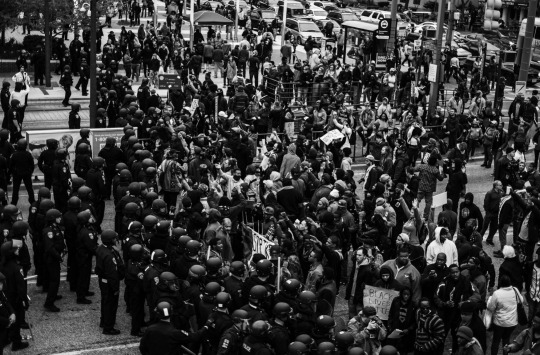
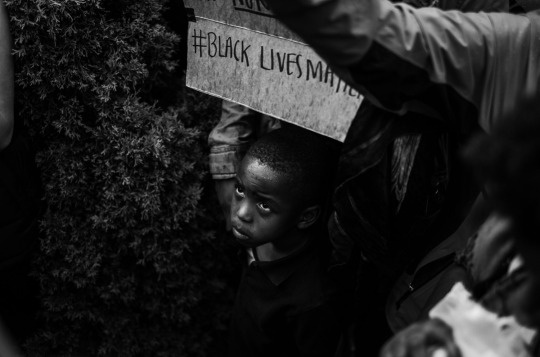
David Allen mentioned that in 2013, he had to borrow his grandmother’s best buy credit card to buy his very first camera or else he couldn’t afford it. He was inspired by it and started his personal project by putting cameras in the hands of teenagers in Baltimore. He named it “Through their eyes”.
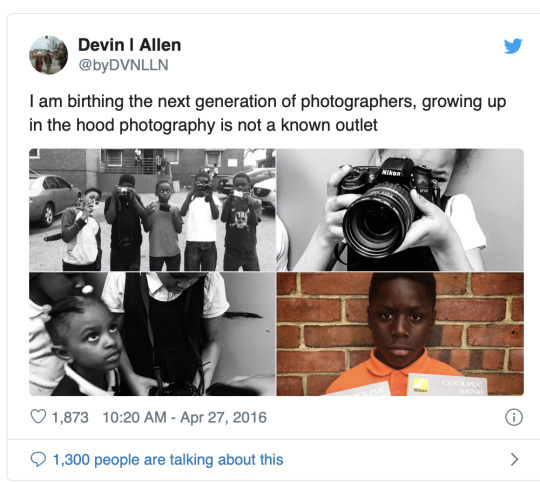
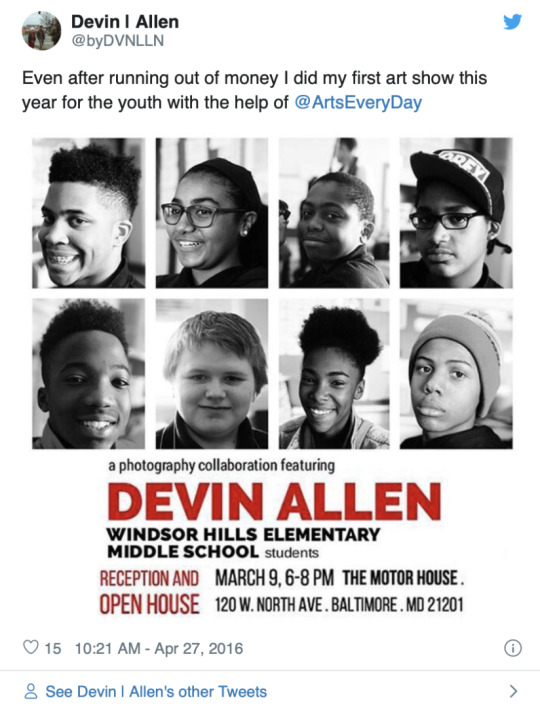
He said: “I look at some photographers, and their daddies were photographers or they took photography classes, and they had all these opportunities to be subjected to photography. We don’t get that chance”.
As so many people using phones and social media as a way to promote their work, almost anyone can be a photographer, but in the professional field, it is still competitive.
Devin Allen said he knows some people think the Time cover photo is just “a lucky shot” because they think he is an amateur photographer that did not go to college for formal training. He refused it and said he did by being on the ground in the community.
For all the fame and attention the TIme magazine brought to him, the money was still tight for him, in the end, it was Under Amour gave him the financial security to continue pursuing his goal.
For Allen, photography was his lifesaver. He said one Friday, his friends got shot while he was editing some photos he took. He wants to help these teenagers during the project, to let them know that it is not okay to choose this kind of path for their lives. In addition, He is looking forward to the day when he can recommend them for photography jobs or even hire them himself.
For each camera, he hands out, Devin Allen put a slash on his notebook. Now is around 160, his goal is 300.
In the article “A Conversation With Devin Allen”, Allen mentioned that he met his mentor Swizz Beatz at one of the charity event. He gave Devin Allen his first Leica camera. He said: “Shooting with Leica makes me think. It’s the perfect tool that fits my style,” Allen comments. As for his current direction? “I’m moving toward storytelling everyday life without shooting people, showing the landscape of Baltimore and the vacant homes”. The article mentioned that Instagram has played a huge role in making Allen’s work and message hyper-visible, owed mostly to the platform’s fast pace paired with a handful of viral posts, all of which Allen says contributed to his early success. Although social media continues to be a driving force, Allen refuses to alter his eye for the sake of double taps. “I don’t create for social media… I want my work to transition and become timeless.”
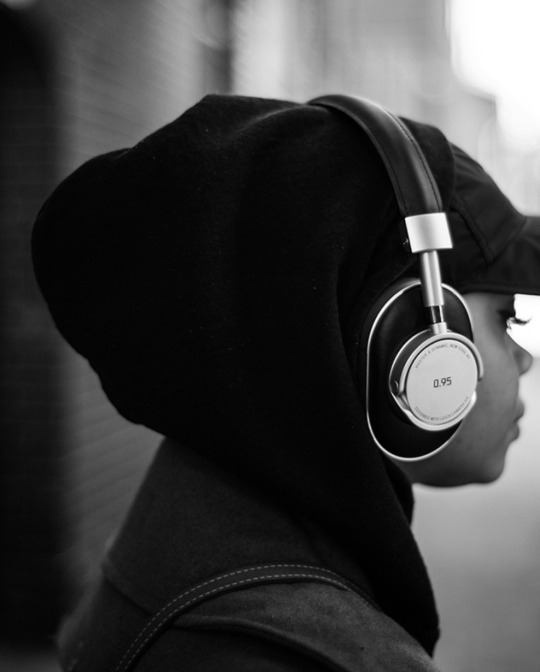
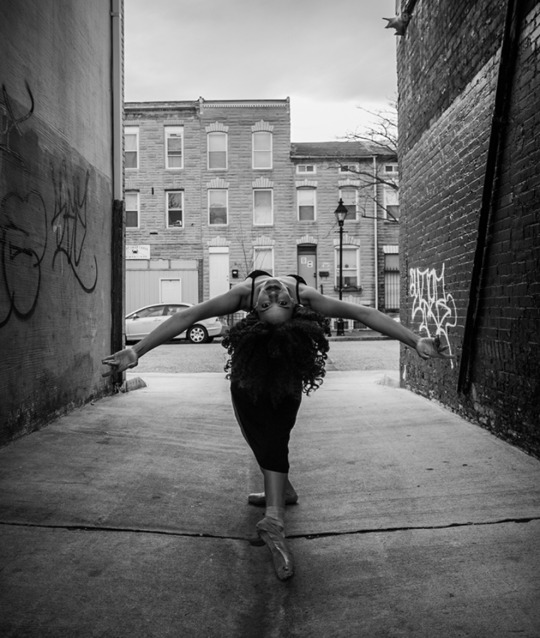
1 note
·
View note
Text
Ethical Philosophies for Decision Making in Photojournalism
Most of the time photographers are exposed to difficult situations in which they have to decide whether to do their job or help to prevent any controversial with the public.
There have been various cases in which photographers have been criticized for that main reason on not helping out. After discussing that, is when we faced with the three common ethical positions such as utilitarian, absolutist and the other guy.
The utilitarian is when the right thing to do is to go according to
“the greatest good for the greatest number of people”.
As a matter of fact, this position understand that there’s nothing wrong about publishing a tragic picture since what photojournalism does is to provide information to the democratic society. It might seem like a cruel thing to publish tragedy pictures about someone else, however in some way can help other to be careful of a certain situation. We have below the example of John Harte. He got people to be aware about drowning and the number of victims decreased for the following month that he published the picture.

Bakersfield-California 1985
On the other hand, there’s the absolutist position that is associated with the right of privacy.
It’s understandable that it might be a good thing to share a picture for the rest of the world to be cautious, however that doesn’t justify that is still invading someone’s privacy. According to reading Perception
“Individuals have certain rights... among them the right to privacy”
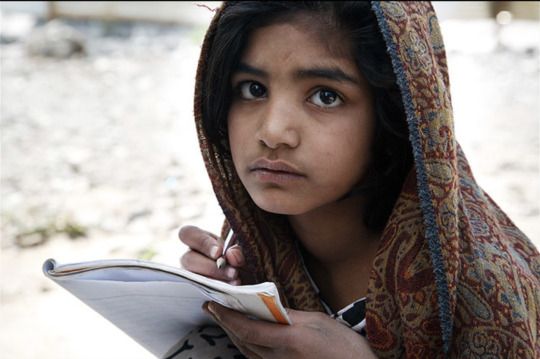
October 2005, after the earthquake in Pakistan
Controversies arouses because of the ethical responsibility that a photojournalist should have. For examples, one of the most famous cases which was from Kevin Carter when he captured the moment a vulture is waiting for a Sudanese girl to just die because of hunger. However, that situation was not the first or last.
Then we have The Other Guy Argument which new photojournalist or even experienced photojournalist do things because others do it too.
When something is trending, everyone else also want to get attention by talking about the same story but with a different version. That is the main cause why people uses some tragedies as an excuse so that they can also get known by others. However there are some that get luckier than others, just as with the example of Paul Hansen who photographed a 15 year old who was shot and killed by the police.


It is important to document the war time to let people know what is going on,
but it is also a controversial issue that how much does the public need to see. President George H.W. Bush even banned news organizations from photographing the homecoming dead, but in 2009, President Obama ended this banned. And as we wonder, how do public see dead bodies in the war? According to the article “When We See Photographs of Some Dead Bodies and Not Others”, In the book “Regarding the Pain of Others,” Susan Sontag argued that showing only photographs of violence that happens abroad generates separation between subjects and viewers. These images imply that tragedy is inevitable and unavoidable — and therefore more acceptable — when it is experienced by faraway people; they create the sense that violence is something that happens elsewhere and to others.
The Cheerios test (also known as the breakfast test) is something that would a person be able to see this photo while eating breakfast. When the Salt Lake shooting was printed and put on the front page, there was many people in Utah county called and complained that it was inappropriate and kids don’t have to see that. It did not pass the Cheerios test.

In the society of media being so convince, images that are very visually compelling and dramatic grab people’s attention easier,
but some people think that documentary photographs should not be too “beautiful”, photographs that expressing people suffering shout not be “beautiful” or “art”. According to “Top Photojournalists debate: do beautiful images glamorize conflict?”
This is the picture when Elena Jacob Bilal, 65, embraces her three grandchildren as they wait in the UN refugee camp in the city of Wau, South Sudan. It sparked a big discussion in the Netherlands with people saying the photograph was too aestheticised to show how dire the situation is.
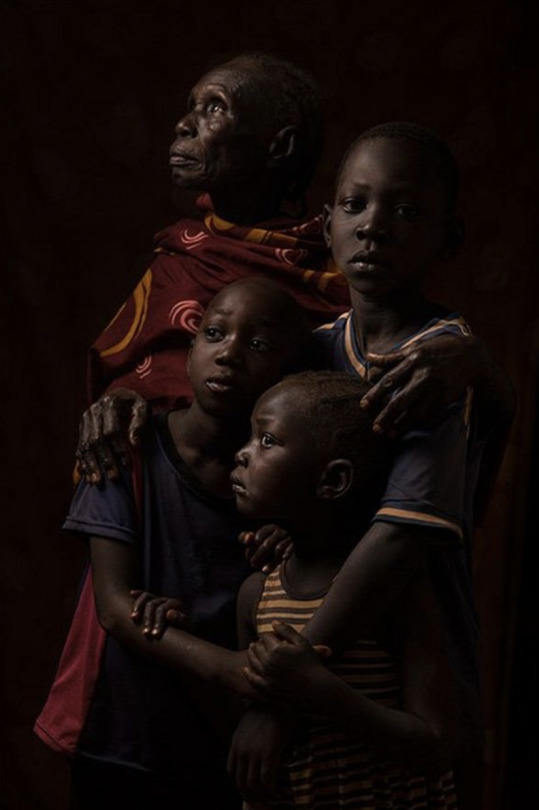
Another controversial issue is the ownership of a photograph.
The copyright of a photograph normally belongs to the photographer or the organization who assigned it. However, the Dorothea Lange’s photograph Migrant Mother, this woman get no benefits from the loss of their privacy. In addition, the subject became the permanent role of the human misery. The fact is, the subject in the photo, Florence Thompson was an active participant in farm labor struggles in the 1930s and her daughter even commented that Florence Thompson hates this photo because it did not show that light of her.
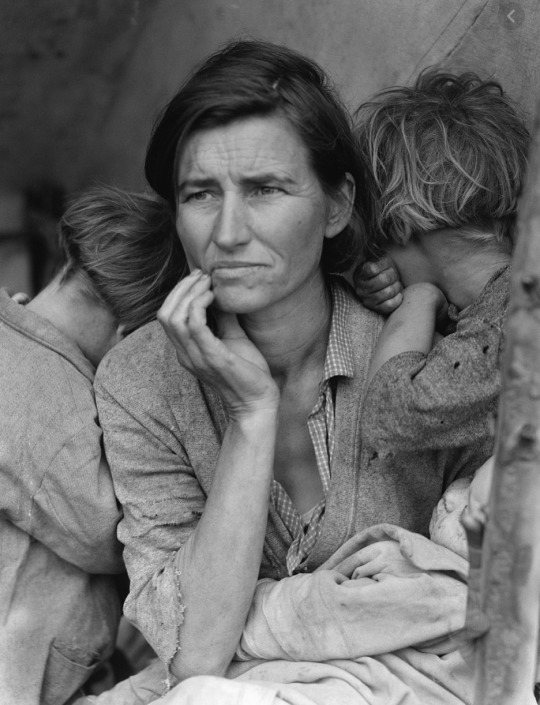
Also we have the example from the image that was part of W. Eugene Smith’s work to expose the effects of mercury poisoning in the Japanese fishing industry. In 1997, 20 years after their daughter’s death, Smith’s widow has been asking not to use this photo in the future.
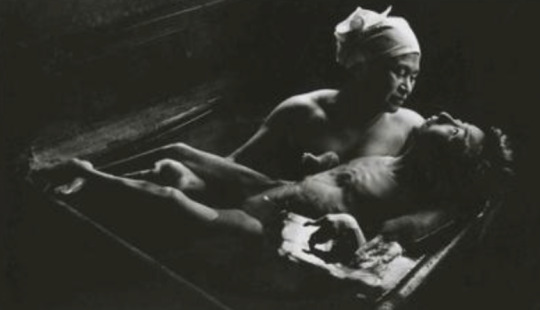
Tomoko Uemura in Her Bath (1971)
The Ethics of Seeing
According to the video from SFMOMA Susan Meiselas recorded some of the moments during the civil wars in Nicaragua and El Salvador. She shares that it’s not just to see a picture but to engage in some way to it. Finally as Meiselas shares, the main goal that a photographer should always take in mind is about how to make the audience to feel or connect with the people in the pictures.
“It’s a big distance to travel, from a photograph back to the lives of those who are within it... Connecting through me to them (audience)”
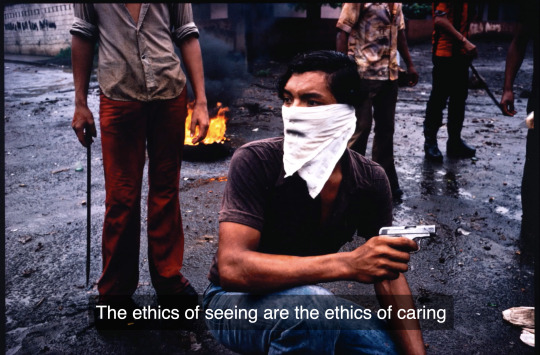
Susan Meiselas on “the ethics of seeing”
0 notes
Text
Ethical Issues in Photojournalism
“Verifiability and manipulation are especially significant in photojournalism and documentary work”
In the reading Perception, mentions the ethical issues that have been affecting the photojournalism, such as directorial technique, digital manipulation and representation of tragedy.
It is said that there was a controversial about whether pictures were staged or actually a moment in history. Some documentary photographers were accused that they were using props, staging people and even faking the photos. For example, Arthur Rothstein was accused faking the picture by moving a skull from a place to another to make the conditions worse than it actually was. Nowadays, many of this cases are still going on and even to the point of making up a scenario that never happened (Photo-Ops).

On the other hand, photoshopping the cover of magazines also became one of the ethical issue for photographers.

The digital manipulation affects the credibility of journalism. Photojournalisms are like silence observers, they can’t be acting like a director during any kind of conditions. If there was something staged inside a photograph, they should point out to the audiences the part that has been staged. After all, by trying to fix the timing or location for the picture, the photographer will not be reliable anymore; making people to lose interest, and their power to influence public will be gone.
In the reading Conflict Conversations, for most of the people around the world, it is impossible to make everyone notice every event that we are supposed to know.
In addition, although we knew about some event, it might be a hundred percent true just by looking at the information on the internet. Some events are highly noticeable by people but the truth isn’t revealed and some of the time what we see is actually opposite with the truth. In that condition, what documentary photographer do is to reveal the truth and send messages to public. It is a high dangerous job that might get themselves kill, and the goal is to be the eye of the public. Letting people notice that we are supposed to know. By that way, people can know about the truth and hopefully do something to help and support.
1 note
·
View note